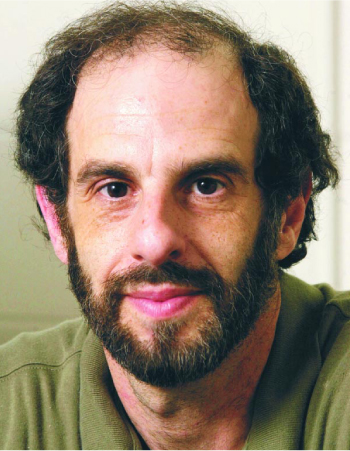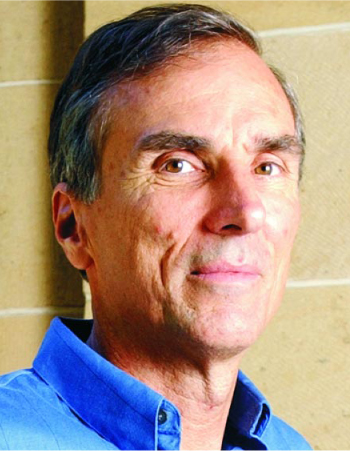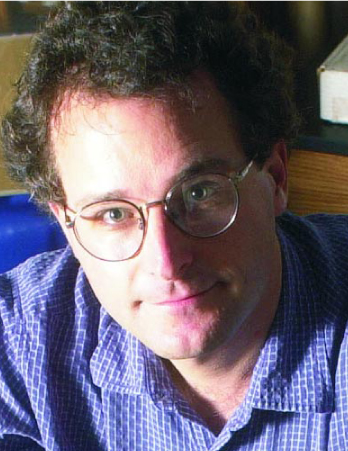MacArthur Fellows Announced for 2002
DOI: 10.1063/1.1535015
In September, the John D. and Catherine T. MacArthur Foundation named as its fellows 24 individuals, ranging from a trombonist to a paleoethnobotanist to a cosmologist. Among those honored are four with backgrounds related to physics: Paul Ginsparg, Charles Steidel, Brian Tucker, and Paul Wennberg. The nearly two-decade-old fellowship program is giving each winner a $500 000 unrestricted grant for the next five years.
Ginsparg, who holds a joint appointment at Cornell University as a professor in both the physics department and the faculty of computing and information science, is widely known for creating, while a research staff member at Los Alamos National Laboratory, the e-print archive currently hosted by the Cornell University Library at http://arXiv.org
This interactive mechanism for scientific communications complements and, in some cases, replaces more traditional paper publications. The foundation says Ginsparg has “deliberately transformed the way physics gets done—challenging conventional standards for review and communication of research and thereby changing the speed and mode of dissemination of scientific advances.”
After Steidel completed his graduate studies in 1990 at Caltech, he developed a highly sensitive method for identifying red-shifted objects; that method is based on the effects of interstellar hydrogen on the objects’ spectra. Steidel, now a professor of astronomy at Caltech, has “substantially expanded our capacity to detect galaxies at the end of the universe,” says the foundation, adding that his efforts have provided astronomers “the means to explore with much greater sensitivity the early processes in the cosmos that led to the distribution of galaxies in the contemporary universe.”
Steidel is working to test, through observation, competing theories of how star formation has evolved over time. According to the award citation, “By developing innovative methodology and making careful measurements, Steidel continues to enhance our understanding of the early history of the universe.”
Tucker is a seismologist who uses affordable civil engineering practices to help avoid disasters in the poorest countries. More than 10 years ago, he founded GeoHazards International, a not-for-profit, nongovernmental agency dedicated to preventing earthquake-induced structural failures in developing countries. He currently is president of GHI, a consulting professor in Stanford University’s civil engineering department, and a member of the editorial board of the Journal of Earthquake Engineering .
According to the foundation, Tucker is “an expert at adapting techniques used by developed countries in risk-mitigation projects so that [those techniques] fit within the social, political, and economic constraints of at-risk communities.” GHI principally focuses on schools because, in many regions, their poor construction makes them a common source for earthquake casualties. Tucker and his associates are working to develop and apply a global earthquake-risk index to estimate risk and motivate risk-reduction measures. The foundation says that his “efforts have dramatically reduced the potential for death and injury to children and others from earthquakes in vulnerable cities around the world.”
Wennberg has “significantly refined our understanding of natural and anthropogenic influences on the chemistry of the atmosphere,” says the foundation. Free radicals are a major contributor to the formation of ozone and the regulation of greenhouse gases, but their low concentration and instability present obstacles for experimenters looking to study them.
To overcome such difficulties, Wennberg and colleagues developed airborne sensors to detect these substances. He refuted the belief that lower stratospheric ozone is destroyed mainly by nitrogen oxides and showed that odd-hydrogen catalysis can be a quantitatively more important process. Ozone in the stratosphere shields Earth from UV radiation, but tropospheric ozone, which largely results from nitric oxide delivered to the atmosphere by aircraft and surface hydrocarbon burning, significantly reduces air quality. Says the foundation, “By developing methods for measuring radical gases in situ and interpreting these results within a theoretical framework, Wennberg has advanced our understanding of atmospheric chemistry.”

Ginsparg


Steidel


Tucker


Wennberg

